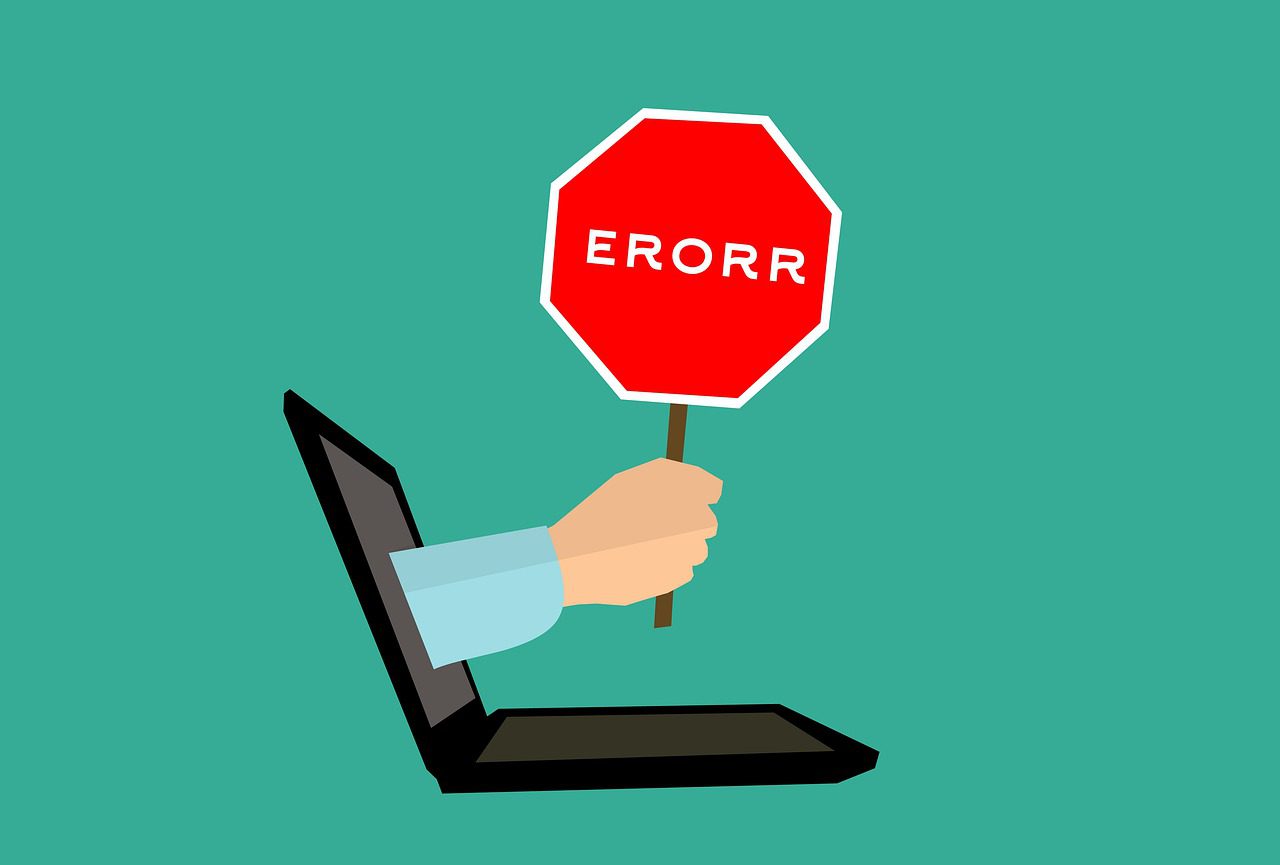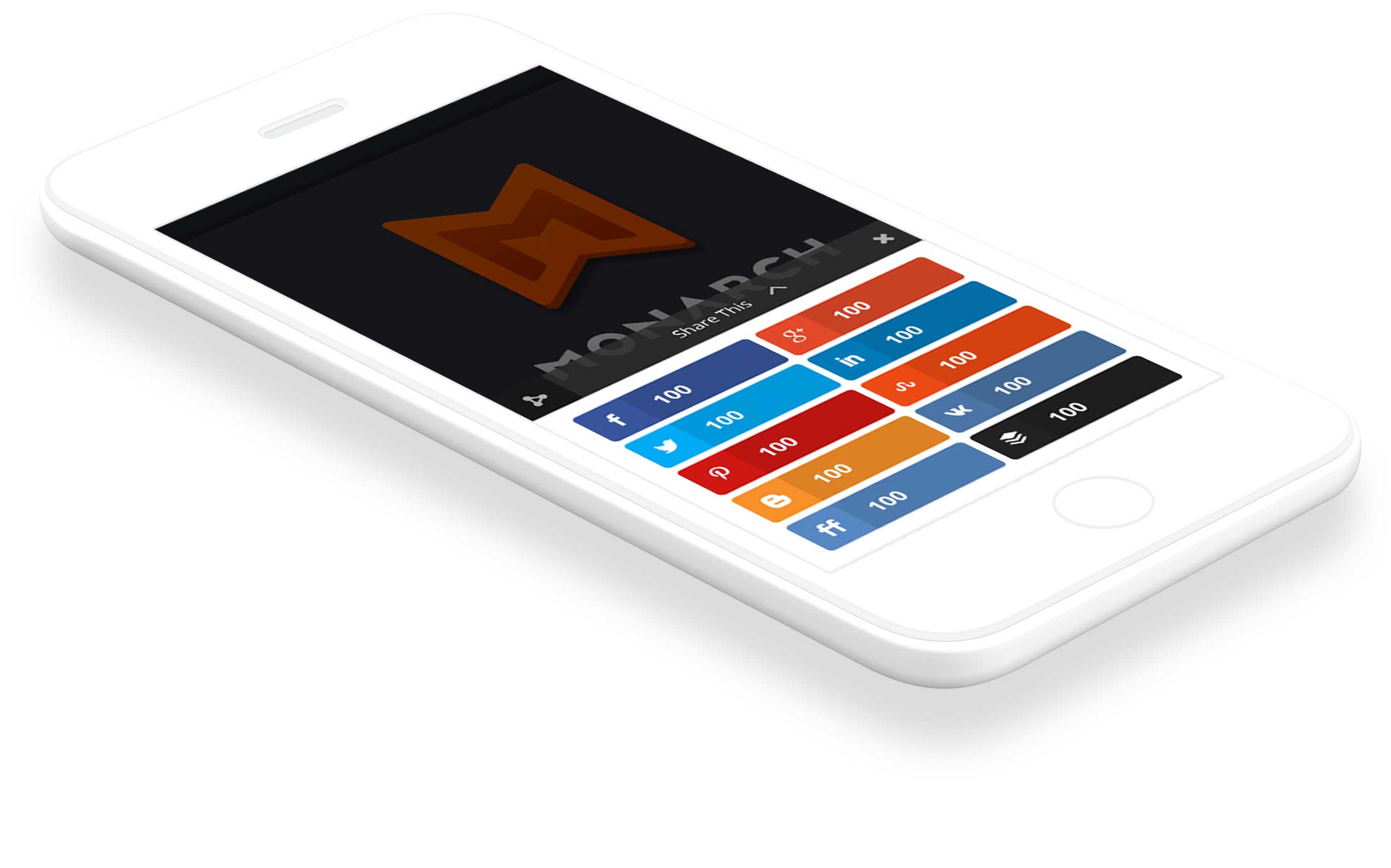by Damon Burton @ Utah Sites | Mar 8, 2020
You’ve probably contemplated ways you could use it to earn a little bit of income on the side. Luckily, depending on the amount of effort you want to expend and how many monthly visitors you have, you have the potential to earn thousands of dollars per month in side revenue.
So how do I build up my visitor count?
Understand Your Audience
The first thing that you need to do is understand your audience. It’s one thing to have a lot of views, but if they’re not the right kind of views, you have little chance of turning their time into profit. The questions you need to ask yourself are:
- Who are they?
- What do they want?
- What are their interests?
- What kind of keywords are they searching?
- What is their education, marital status, demographic?
You can go about getting this information by surveying your repeat viewers via email or pop-up, or you could include a short survey in your call-to-action in return for a free product. Going the survey route can help you get precise answers regarding your clientele, but it can also get a little dicey if you ask questions that are too personal.
If you don’t want to go the survey route, you can always use Google Analytics to gather up some information for you. Granted, the information that program gathers is going to be more generic, but it can still give you a better idea of who is frequenting your site.

(Pixabay / Pexels)
Once you have a good grasp on who is looking into your products or services, you can start to tailor your educational material to meet their needs. The more value you can offer your target audience, the more shares, likes, and conversions you’ll get.
SEO
Search Engine Optimization (“SEO”) is a whole can of worms in and of itself, but there are some pretty key aspects that you can focus on to increase your website traffic.
Quality content is your number one piece of the puzzle to focus on. You will not build up a steady fan base by writing fluffy, 400-word essays that lack personality. Incorporate humor, a little bit of sass (as appropriate to your company’s mantras), and eye-opening information as you write meaningful posts that are specifically geared toward your target audience.
Include high-quality images, videos, infographics, and other interactive elements to add value and keep your audience’s attention, but make sure that your load times stay low. These quality graphics will not only get you more shares and likes (great for SEO), but they can also encourage one-time customers to become repeats, get you more links from outside sources, and boost your Google rankings. Throwing some specific keywords into the mix (but not too many) will also help those Google bots crawl your site.
Now what do I do?
Once you have optimized your site by taking the time to get to know your audience, you are ready to take some steps to start making money. Once again, it’s important to stay purposeful and have a plan as you start on this journey, but most of these options aren’t terribly difficult to put into action.
Enable Donations
Paypal offers a website extension that lets your clientele donate money to your cause. This method is a less reliable source of income, but it works well if you have a consistent, repeat customer base. It is also a good choice for you if you don’t want to get into the world of ads.
Offer Your Services
If you have something great to offer, consider becoming a consultant. This lets you work on your own schedule and set your own prices for the service that you offer.
Sell Something Digital
Whether it be an e-book featuring personal recipes, parenting tips, or self-published sheet music, offering quality digital products is a good way to earn a little bit of cash. This method takes significantly more time to do well because your customers expect to have a product worth their money. You can entice more people to buy your digital products if you offer some of the quality products free of charge and then require payment for others.
Create a Paywall
This one works really well if you already have a significant following. Patreaonis a popular solution, which allows you to monetize your content on your own terms.
By keeping some of your standard features free, you can continue to gain more popularity, and it shows your customers that you are working to educate and share your knowledge. Once you have a lot of followers, create a subscription paywall that offers even more quality content to premium, paid members. Continue to generate some free content, but spend more time creating paid content to increase your revenue. You can even offer one-time access, one-time payment, monthly subscriptions, and varying levels of membership if you want to appeal to a greater audience.
Use Ads
Selling ad space is probably the first thing you thought of when you started looking into monetizing your site, but it varies widely. You can go the laissez-faire approach and have Google AdSense generate random (though relevant) ads, but you have to be extra careful to follow their ever-changing rules; otherwise, they’ll kick you out of their club.
You could also present a portfolio of your target audience to specific advertisers and try to convince them to run ads on your page. Whenever someone clicks, you get a pre-determined cut of the profit. If you choose this option, you can even be picky on how much you’ll charge per particular ad location on your website (ex: top banner vs. side banner).
Audio and video ads are starting to become popular, and there are always pop-up ads, though you should use those sparingly.
This may seem like the easiest route to go to make a quick buck, but it’s also the fastest way to annoy your customers. Too many ads, ads that aren’t relevant, or ads that constantly interrupt their browsing can be a huge turn-off and even lose you customers in the long run.
Affiliate Marketing
At its most basic, affiliate marketing means that you endorse a product, and if your readers end up buying said product, you get a portion of the profits. Legally, you have to have a disclaimer stating that you’re an affiliate which, depending on your customer base and the product you’re endorsing, could be a very good or a very bad thing.
One last thought
Before you move forward with monetizing your website, make sure that you have nailed down your business goals. Choosing the right kind of monetization strategy for your business can mean the difference between annoying your customers and building up a thriving side-business.
by Damon Burton @ Utah Sites | Mar 4, 2020
Let’s face it, as incredible as Adobe Photoshop is at providing you with the necessary tools to make your pictures pop, its recurring annual price tag is a little more expensive than some small businesses are willing to pay, especially if photo-editing needs are only every once in a while.
Luckily, there are some pretty swanky options out there that are absolutely free to use. From an web design standpoint, high-quality, original photographs not only grab your reader’s attention, but they can also land you in some of the top slots of a Google image search. That reason alone should be enough to convince you to take a little bit of time to make your pictures stand out.
Here is a closer look at the pros and cons of each interface so that you can make the best decision on the right product for you.
Best Cloud Photo Editor: Photopea
Who doesn’t like cloud-based photo editors that are accessible anywhere? Better yet, who doesn’t like free? Photopea is both, and as of October 2018, it has 1.5 million active visitors. And that was before the developer did an AMA (“ask me anything”) on Reddit, which was likely to have accelerated growth.
Photopea is supports PSD, XCF, Sketch, XD and CDR formats from programs like Adobe Photoshop and XD, GIMP, Sketch, and CorelDRAW. Sweet!
Best in Show: GIMP
Unlike its namesake, this program does not limp along: it sets the pace. GIMP stands for GNU Image Manipulation Program, and, according to advanced online users, it rivals Photoshop in many ways.

(Pixabay / Lalmch)
One of the reasons why it’s such an impressive program is because its open-source platform lets users and developers alike design and offer up plugin options to the masses. GIMP comes with many of the same Photoshop tools, layers, and features, and the interface is also very similar – which is a pro and a con in and of itself. All of the similarities to Photoshop plus the endless supply of new tools from the GIMP communities can make this program a little overwhelming to a photo-editing newbie.
Best Filters: Fotor
The main thing that Fotor has going for it is its ability to filter efficiently, quickly, and attractively. It doesn’t have as many different photo editing tools as, say, GIMP, but it has multiple one-click buttons that make some of the better enhancement options just a tap away. Another major benefit is that it has a mass processing option that lets you apply the same filter or edit to many different pictures at once. This is nice if you are dealing with bad lighting or if you have a consistent problem holding the camera steady. The one major annoyance is that it runs a pretty aggressive ad campaign to offset the fact that it is free, so you have to decide if that’s worth it to you.
Best for eCommerce: Pixlr
Pixlr is a good tool for eCommerce users because it runs through the internet and allows you to link your edited pictures directly to some online sites. It has a lot of different one-click buttons like Fotor, and its interface is very similar to GIMP (which is much the same as Photoshop, if you remember). Since its interface is comparable to GIMP, you might find that it is a little more difficult to navigate if you’re a novice to photo editing. Another downside is that it requires you to have a flash player which can be clumsy due to the internet’s recent push away from Flash. All in all, however, it’s still a good choice because #1. it’s free, and #2. it’s an incredibly powerful photo editor, all things considered.
Runner-Ups
Photo Pos Pro is pretty unique in the sense that it actually offers two different interfaces: one for novice users and one for advanced. Both have some powerful tools, but the novice is mostly about filtering, and the advanced starts getting lofty fairly quickly. The upside is that both interfaces are incredibly intuitive in their layout, so there isn’t as much of a learning curve as some of the other photo editing tools out there.
The one major downside to this software is that the free version limits your file size to a relatively small pixel count, so it’s not a good choice for printing large, professional banners or prints. They do offer a paid version that lets you save large file sizes. If large, professional banners or prints are your livelihood, you may want to go that route.
Photoscape is another editor that is good for beginners, but it is a little more basic than some of the other editors out there. It doesn’t have a split interface the way Photo Pos Pro does, but it does have a wide range of filters and features that are easy to master if you only need basic photo edits.
The Take-away
Editing your photos doesn’t have to break the bank or come with a daunting learning curve, and that’s important because quality photos are essential to your credibility. Few things are more uninspiring to your visitors than stock photography, even though it is an easier, cheaper, and less time-consuming option. In the long run, you owe it to yourself, your company, and your customers to provide beautiful images of your products and services.
by Damon Burton @ Utah Sites | Mar 2, 2020
502 Bad Gateway errors can be exceptionally frustrating because they can happen at any time using any browser on any computer or mobile device. You can even get one when you’re already successfully on a website but you click on a link to another page of the same site.
502 errors happen because one or both of the servers aren’t communicating well. The root of the trouble can either be on your side of things or the internet’s side. Before you get too frustrated, there are some simple ways that you can troubleshoot to try and correct the problem.
Client-Side 502 Errors
If the problem is on your side of things:
Try reloading the page
It never hurts to try this right off the bat. Oftentimes, reloading the page is enough to do the trick, but if that doesn’t work, try closing out of your browser and re-opening. For whatever reason, this often fixes the problem.
Try a different browser
If you have multiple browsers on your computer (Chrome, Firefox, Safari, Edge, etc.), try opening the page in a browser that you don’t normally use. If it works, it might mean that you need to clear out your cache or cookies on your original browser or delete some of your extensions.

(Pixabay / mohamed_hassan)
Try clearing cache and cookies
Cookies
Unfortunately, the cookies on the internet aren’t the tasty treats you eat with a glass of milk after dinner (and maybe sometimes for breakfast, lunch, and/or a snack), but they can be extremely helpful.
At their most basic, a cookie is a little package of information that is exchanged between your computer and another website that helps the website remember you. This works in your favor when you’re shopping for items online, if you have trouble remembering your passwords, and if you visit certain websites frequently. Cookies make it so you can fill up your shopping cart, log in without scrambling for your password cheat-sheet, and view ads tailored to your purchasing trends.
Even though cookies aren’t inherently bad or good, they can cause some trouble if you have too many, or some of your cookies are actually malware posing as a cookie. If you continuously get 502 errors, it’s best to clear all of your cookies at once, but know that you might lose some of the placeholders you normally don’t even think about. It can be a little inconvenient the next time you try to log in to a frequently visited website, and you have to try to remember which version of your favorite password you used before it locks you out.
Of course, you can always individually select which cookies to delete, but it will probably save you time in the long run to delete them all and input your information again as needed.
Cache
Your browser’s cache is designed to keep your computer and internet connection running as quickly as possible. Basically, it downloads a snapshot of images and icons that are consistent across all of the website’s pages and stores them so that you don’t have to keep re-downloading those features when you load a new page on the same site.
Sometimes, however, the cache will get confused or overly full, and you’ll start getting 502 error codes. Clearing your cache is a good way to start afresh, and you most likely won’t even notice any difference.
Restart Your Equipment
“Have you tried turning it off and then on again?” This seems to be every IT specialist’s favorite question – probably because it is so effective! Start by restarting your computer, and if that doesn’t solve the error code, try restarting your modem or other internet connectivity devices.
Come Back Later
Sometimes the best way to fix the problem is to let it resolve itself. If you can afford to come back and try again in a couple of hours, that is a good way to go.
Server-Side 502 Errors
If you’ve tried everything on your side of things, and you’re still getting a 502 Gateway Error Code, it’s time to start looking at the causes outside of your control.
Contact the Website
It never hurts to contact the website if you keep running into the 502 Error. They may already be working on it, but it doesn’t hurt to let them know.
Contact your ISP
It’s possible that the problem could lie with your Internet Service Provider, so feel free to give them a call. They may guide you through some additional troubleshooting steps or confirm that the problem is on their end and that they’re already working on it.
While frustrating, 502 gateway error codes aren’t the end of the world, and they usually get resolved fairly quickly. If (or when) you encounter one, take a deep breath and go through the steps above. They will most likely rid you of that pesky error code so you can move forward on your internet journey.
by Damon Burton @ Utah Sites | Feb 26, 2020
Few things can invoke the wrath of a sailor’s mouth like the spinning rainbow wheel or blue screen of death, but the frustration of running into a 404 error page when you’re on an online mission doesn’t trail far behind.

(Pixabay / 777546)
What is a 404 error?
A 404 error means that the webpage your customer is looking for does not exist, and there are a few reasons why it might happen. Sometimes a link is misspelled or has extra symbols added onto the end. You may have encountered this yourself as you’ve tried to type in a link written down on pamphlet literature (second or third time’s a charm…) Long links with a lot of backslashes and subfolders are prone to retyping errors, and links that are copied and pasted from other websites are highly likely to be miscopied. Add individuals who are computer illiterate or have difficulty typing into that mix, and your clientele could be getting more 404 errors than you realize.
Another reason why 404 error messages happen is due to you updating content. If you delete or move old content without redirecting the old page to a new location, your website won’t know where to send your visitors if they try to visit the old page.
Why are 404 pages are bad?
We know that 404 messages are an annoyance to your customers, but they can also cause some serious damage to your bottom line if they happen a lot on your website. From the customer’s side, 404 messages make your website look unreliable, and it’s just annoying enough that they are likely to close the page instead of trying to find the site they’re looking for. There is so much competition in the online market that customers can afford to be choosy with where they spend their time. If they get annoyed on your site, it’s well within their purview to take their attention elsewhere. That means you could lose conversions and sales.
These patterns can have bearing on your search engine optimization, too. Google and other search engines notice when people don’t stay on your site and they can punish you with lower stratifications on search pages.
404 Error Page Ideas
Unfortunately, 404 messages are going to continue happening because your customers are human, but fortunately, there are things that you can do to make the errors work in your favor.
Make it funny
There are a lot of excellent examples of funny 404 error messages that will make you chuckle. If you do a Google search for “funny 404 errors,” you’ll find Star Wars references, cute animations, bird puns, pugs wearing boxers, and Mickey Mouse, Goofy, Pixar, and Simpsons cartoons all apologizing for the lack of an appropriate webpage.
Making your customers grin is an excellent way to smooth over some of those annoyed feelings and can make them want to spend more time on your site. Customize your 404 error message to entertain your users, and they may stick around a little longer than they originally planned.
Make it attractive
If your company’s profile doesn’t lend itself well to funny cartoons, at least make sure that your 404 error message is attractive. Add in a beautiful, relevant picture or graphic to capture your customers’ interest.
Use a Call-to-Action (CTA)
A CTA can be a powerful tool in keeping your customers on your website even when the page they’re looking for cannot be found. Invite them to look elsewhere or visit another section of your website. Direct them toward your subscription page or encourage them to use the real-time webchat to find the page they’re looking for. Some customers just need to be told where to look next, so adding a call to action can give them a needed starting point.
Include helpful links
Your 404 error page doesn’t have to just be informative – you can give your customers a little bit of help, too. Including some helpful links to the Contact Us, Search, Homepage, or Product Page can help them feel like you are looking out for their best interests.
Incorporate a search bar
One step beyond including helpful links is to include an actual search bar on the 404 error page. This lets your customers immediately try again to find the page they’re after, and it keeps them on your website for longer. The longer they stay on your website, the more likely they are to complete a sale, and, well, you see where I’m going with this. If you don’t know how to incorporate a search bar, it’s to your advantage to learn.
Keep your URLs succinct
Gone are the days when links over 75 characters were acceptable. For ease of use, you need to keep your URLs pared down to a root and a sub domain. This not only makes it easier for your customers to copy the URL correctly, but it also helps your SEO.
Offer an incentive
Everybody likes getting free stuff – especially customers who are frustrated by a 404 error. Consider throwing in a free ebook, discount code, one-time offer, or money applied toward the customer’s purchase as a token of your appreciation for them sticking around on your site. You win because they are spending more time on your site, and they feel like they’re winning because they get a little compensation for their time.
There’s no getting around the fact that 404 error messages are a turn-off to many customers, but incorporating at least a few of the above strategies is a good start to minimizing their pain and even using them to increase customer loyalty.
by Damon Burton @ Utah Sites | Feb 17, 2020
Social sharing has become an integral part increasing a website’s visibility through content promotion, and its popularity is continuously on the rise. Since so many of us are active on social media, this creates a marketing opportunity that companies simply cannot ignore.
In this way, social media has complemented search engines in helping people find information on the internet. Next to search engines, social media drives the most traffic to websites, serving as a two-way communication that helps in building brand awareness.

(elegantthemes / monarch)
If you don’t already have a social media plug-in on your WordPress website, the countless options available can be overwhelming. Below we have highlighted a few easy-to-use social sharing WordPress plugins to help narrow your choices.
Monarch
Starting with our favorite and the one we use, Monarch is a top-rated sharing plugin that allows a variety of options. You can easily import or export personal settings from more than 20 other sites supported by Monarch, and the dashboard enables you to manage them intuitively. You can also decide at what point your social share buttons will appear. They can be ever-present, scrolling, or flyby, or they can pop up after a user leaves a comment. With Monarch, you can tailor how your buttons appear to your customers and highlight your social share counts. Another important feature of Monarch is the ability to add social follow buttons by using a widget or a short code.
WP Social Sharing
WP Social Sharing can add attractive social share buttons for the leading social media platforms to WordPress posts, pages, media, or custom posts. WP Social Sharing is generally considered to be a simple plugin because of its few customization options, but it gets the job done—and it’s free. While most social sharing programs use images for their buttons, WP Social Sharing created large social sharing buttons through the use of CSS3.
Social Snap
A good part of your online social marketing strategy is controlling how and who shares your content. Social Snap gives websites the power of broad social sharing with little to no setup. Social Snap has more than 30 social networks and apps to choose from. This allows your visitors to share your content through their favorite network or app such as Facebook, Twitter, Google +, LinkedIn, Pinterest, and many more. You can place your share buttons anywhere on your website. All you need to do is pick and choose where you would like to show them.
MashShare
At its most basic, MashShare is a free social media plugin that is highly customizable for social media sharing and optimizing your website’s valuable content. Each additional add-on costs money, but they also give you significantly more options.
While other social buttons use external scripts that significantly increase loading time, MashShare is not dependent on the external script. The codes are loaded directly from your website, with MashShare ensuring the privacy of your website and your visitors.
With so many available social sharing plugins for WordPress sites, choosing the right one is just a matter of determining how you want your buttons to look and function. There’s no universal right or wrong, but as you check out some of the popular options, you can get a feel for which one is the best fit for your company.
by Damon Burton @ Utah Sites | Feb 13, 2020
Blogs and forums are two great tools for online communication to build a community, and while they might seem like the same thing at first glance because they share similar features, the two are uniquely different from one another.
When you’re considering implementing a blog or a forum, you need to think through some of these differences to decide which will best suit your target audience. Before you make your choice, you need to establish who you are trying to connect with and what your purpose is.

(Pixabay / geralt)
Forums
Forums are designed to allow for a wide range of discussions that are usually organized by categories and sub-categories. Any member can begin a new discussion and admins and moderators monitor the conversations for trolls. In this sense, each forum member has a unique opportunity to contribute, but not all members bring equal value to the conversation.
Posts in a forum are initially given equal importance, and then their popularity spreads out a little as each post is given weight based on the group’s collective reaction. Companies typically deploy forums to build a tribe, or as their way of assisting with customer service and technical support. For example, customers of a business can search various forums as a knowledgebase to see if their burning question has been previously asked and answered. Forums are also useful in online tutorials, product support, and viewpoint exploration of a topic or idea.
Forums may be updated anytime, and any user can post without having to wait for the other members or the administrator to take the initiative. Multiple authors may contribute to their own or other members’ threads.
The posts in a forum are presented in chronological order of those that have had a recent reply, which makes it easy to follow a conversation. The users provide the shape and speed of the discussion depending on their interests. When a topic is interesting or controversial, expect many people to give their own take on the subject.
Forum posts are text driven, so contributors don’t usually embed media within them. To make the conversations more personable, some forums allow members to use avatars to represent themselves. That said, forum discussion is usually limited to the members of a group. Due to direct conversations involved, attribution is a key feature of a forum.
Blogs
On the other hand, a blog usually acts as an online journal or “News” archive. Unless comments are enabled on a blog post, the conversation is usually a singulare direction, the author to the reader. Blogs can be updated as regularly as an author wants, and it is useful when publishing information, reflecting on a thought, or bringing value to the reading audience.
The appearance of blogs have changed considerably over time. Most blogs today include standard features and structure such as the header with the navigation bar, the main content, post meta (author name and post date), and a footer with relevant links such as privacy policy, disclaimer, contact page, and more.
Like a forum, blog posts are also text-driven, but they are more likely to contain images, videos, sound files, and links to other blog posts or websites.
Both of these tools have their place, and some companies opt to employ both. Look around for online examples, and see which of these two communication platforms suits your needs best, because there is no right answer.





